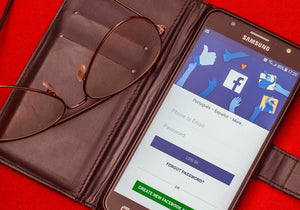If you're advertising on Facebook you're going to eventually need to step up your Facebook audiences game to a more direct and specific approach. After a while, interest targeting and location targeting are just going to run out of steam. These broad audiences, although a good start, only get you half of the way there. Once you reach the plateau, you’ll have to start getting more custom with your audiences because a specific audience can significantly improve your campaign results. As you might expect...
A custom audience is basically an audience that you create from scratch. It's not a preset in Facebook, it's not an interest, a demographic or a behavior targeting, custom audiences are usually created based on people that are already familiar with your business.
Here are just a few examples of these subsets of people…
- email marketing list
- people who visited your website
- people who've interacted with you on Facebook at some point
- people who have saved something in their cart, but didn’t purchase
- those that have messaged you directly.
This is why Facebook custom audiences perform so well, these people already know your business and as long as they had a good first interaction last time they visited, these people are likely to make their first purchase or buy from you again. You’ve built up trust!
So how do you make such an audience?
In Ads manager, go to “Audiences” and then click > Create Audience > Custom Audience and this window will show up:

Now you can see there are many different types of sources that you can pick from. Let’s take a closer look at some of the most popular ones.
Website Traffic
This custom audience has a TON of settings you can play with, but if you’re really new on Facebook and just getting started, pick “All website visitors”. Facebook will then figure out the people who are most likely to take the desired action regarding your business. Then you have to set a time (days) into the past that you want visitors to be included from. If you want to focus on people who visited one or more specific web pages you can pick “People who visited specific web pages” and insert the page links. This allows you to be even more direct with whom you are interacting.

You can also filter visitors based on the amount of time they spent on your website or triggered any events such as “Add to cart”, “Purchase”, “Lead” etc. Maybe some visitors have added a few products to cart but didn’t purchase anything yet, while other visitors have also added to cart and did buy something in the same time frame. Exclude the second group for a more refined audience: your ads will go to people who have ONLY added to cart and did NOT purchase anything in the last, let’s say, 30 days. You can target exactly what and who you want. Play around with as many combinations as you wish, give your audience a name, click “Create audience” and you’re good to go!
Customer List

When you create an audience from a customer file, you can also include their lifetime customer value which tracks how much they have spent with you in the past. Something you can frequently export from eCommerce platforms or calculate outside of Facebook. If you have a document where you tracked and gathered the lifetime value of a customer you can import it into Facebook. This metric helps Facebook understand what your higher value customers look like and advertise to them.
Most people will not have this option, therefore they will need to upload(.CSV or .TXT) or paste a customer list themselves. The more information you can include here, the better. You can insert their names, email addresses, phone numbers, city, zip code, age, gender, pretty much anything that will help Facebook identify and deliver your ads to those specific people. Again, select an audience name and click “Create audience” and you will be able to use your brand new audience into your ad sets. Although this audience is not as “ready to buy” as the one mentioned previously, it is still a valuable piece of information that could give you a springboard for more detailed audience targeting.
Video Engagement
You can create an audience off of people who have watched a video from your Facebook page as well! You can get really specific with how long they have watched it too, so that you only target those that devoted some time to your content. It’s safe to say that those who viewed for at least 3 seconds are not really familiar with your brand and are less likely to remember you, so it is recommended to pick those who have watched at least 25% of your clip, increasing their likelihood of becoming a purchaser. The higher the percentage of video viewing, the warmer the audience. The problem with this, however, is that very few people watched 95% of your content so you will end up with a very small audience. Balance is key.

After this step you can select one or more videos for your audience. Try to make it as large as you can, but also keep it relevant.
Lead Form
If you’re constantly running Facebook Lead Campaigns, you probably have a bunch of forms already filled out and ready to go. You can generate an audience based on people who either opened a specific form, opened but didn’t submit it, or opened and submitted the form. As with the rest of these audiences, the important factor to remember here is basing an audience off of previous engagement not only gives you a list of people that are already familiar with your brand, but gives you a better idea of what sort of messaging you want to deliver to these people based on their activity.
Facebook Page
This is pretty straight forward - this audience is formed around people who’ve interacted with your Facebook page. You can select a number of specific actions performed on your Facebook to get even more granular with this audience. Here are some different scenarios you can choose from:

For example, someone who clicked a call-to-action button is considered warmer than someone who just visited your page and left. The interest expressed on your business is very different between these two actions. If you are just starting with Facebook audiences, just select “Everyone who engaged with your page” and adjust later based on your results. You can also make more different audiences and ad sets and see which suits your business better. Similar audiences can be created using your Instagram business account.
That should be enough to get you started! You have graduated now from simple interest, demographic, and location targeting, and you don’t have to settle for presets and canned audiences. You can make audiences that are specific to your brand and your engagement and start targeting the people that are ready and willing to explore further!






